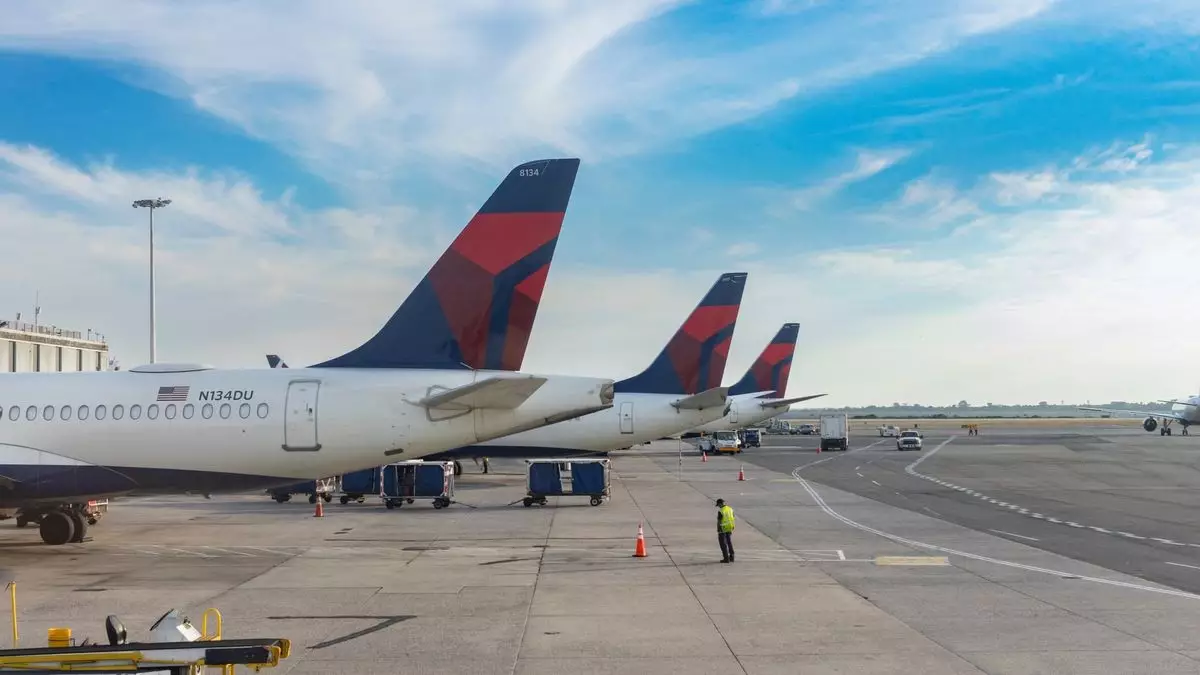Delta Air Lines has faced significant challenges in the third quarter, reporting a notable 30% decline in operating income. This downturn can largely be attributed to both industry overcapacity and a severe operational fiasco that unfolded during July. Specifically, a technical failure linked to CrowdStrike led to the cancellation of around 7,000 flights within a brief five-day period, causing an estimated financial hit of $500 million in net operating income. This incident, coupled with a 6% rise in operational expenses, has placed considerable strain on Delta’s financial health, resulting in an operating margin plummeting to 8.9%, down from 12.8% a year prior.
Despite these setbacks, the airline has expressed optimism about future performance. Delta’s operating revenue showed a modest increase, climbing 1% to $15.7 billion, largely driven by a 4% expansion in capacity which indicates the airline’s readiness to adapt to market demands. Delta’s president, Glen Hauenstein, noted during an earnings call that the overall balance in the airline industry has improved, fostering a belief that Delta can outperform last year’s results in the looming fourth quarter.
Addressing Industry Overcapacity
The airline industry, particularly in the United States, has been grappling with overcapacity, which has hindered ticket prices and overall profitability. Compared to the previous year, the average revenue per mile for passengers experienced a decline of 3%, a trend exacerbated by heightened competition among airlines. July statistics indicated that U.S. airlines operated 5.8% more capacity, with the increase tapering to just 1.2% by September as airlines adjusted their flight schedules in response to falling summer fares.
The growing concern about overcapacity prompted various U.S. airlines to recalibrate their operations, particularly discount carriers that have had to make drastic schedule modifications. This deliberate control of capacity is anticipated to stabilize airfares, as seen in the Consumer Price Index data from September, which indicated a year-over-year increase in ticket prices of 1.6%.
Looking Ahead: Q4 Projections
Moving into the fourth quarter, Delta projects a more favorable operating margin of between 11% and 13%, compared to 9.3% during the same period last year. This anticipated recovery is closely tied to the industry’s efforts to manage capacity growth, with airlines collectively expected to increase their flight offerings by just 1.8% year-over-year. Notably, Delta intends to expand its own capacity by 3% to 4%, positioning itself to capture an improving market.
As the airline navigates these changes, the focus on balancing supply with actual demand will be critical not only for Delta’s performance but for the broader industry as well. While the operational issues of the past may weigh heavily on historical financial results, the projections for Q4 suggest a noteworthy recovery and adjustment to a more sustainable operational model, hopefully steering Delta towards a stronger financial position.
Delta Air Lines has a challenging road ahead, grappling with the repercussions of past operational setbacks while strategically positioning itself for improved earnings through capacity management and fare adjustments.

